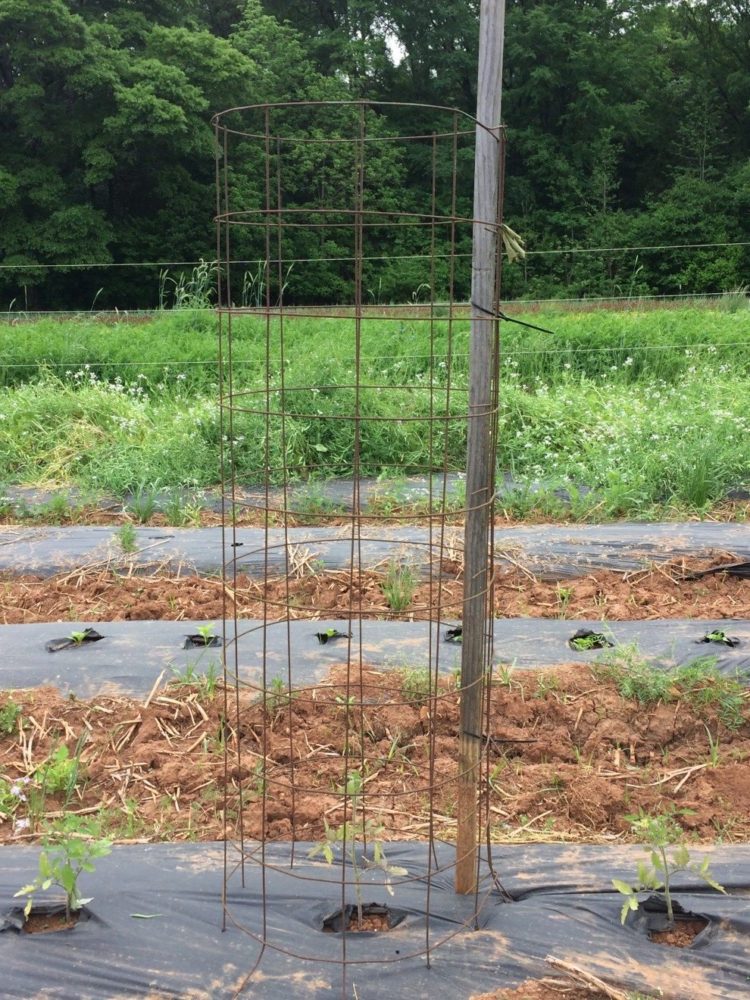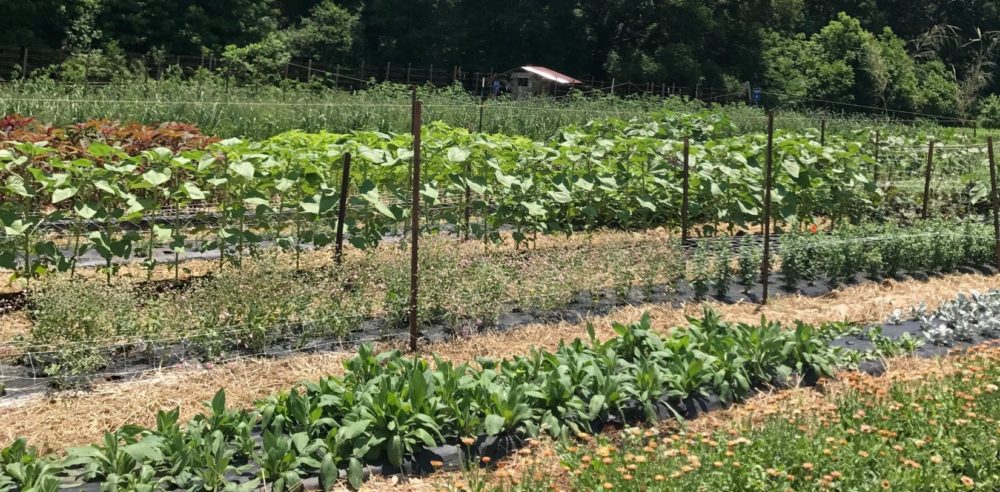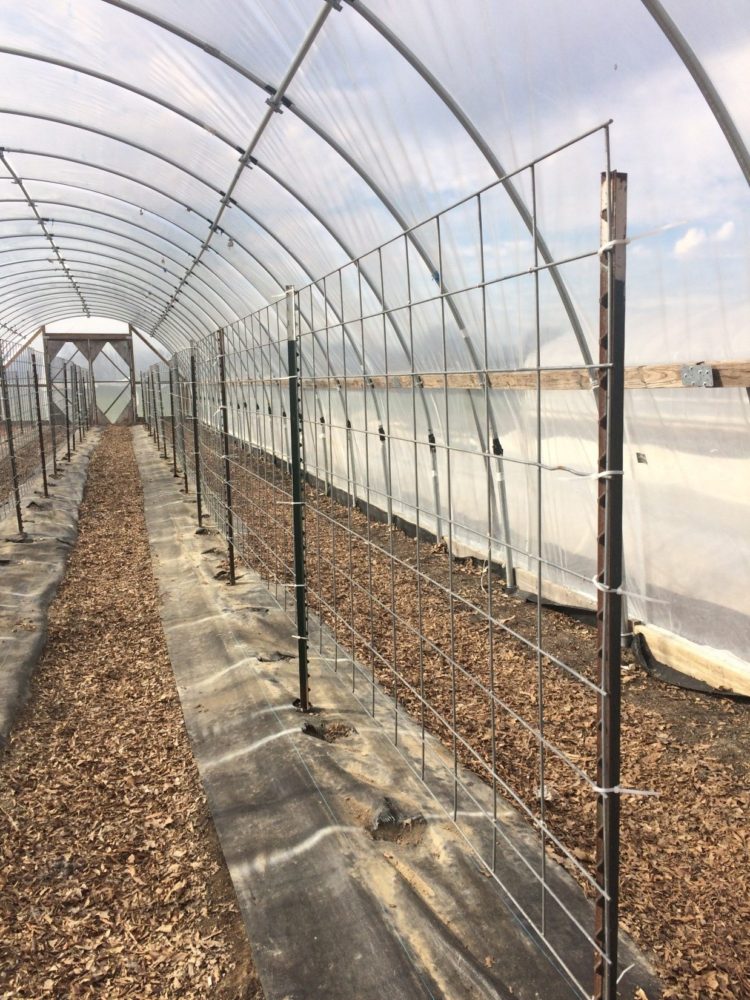by Gena Moore, CFSA Organic Research Coordinator | Monday, May 20, 2019 –
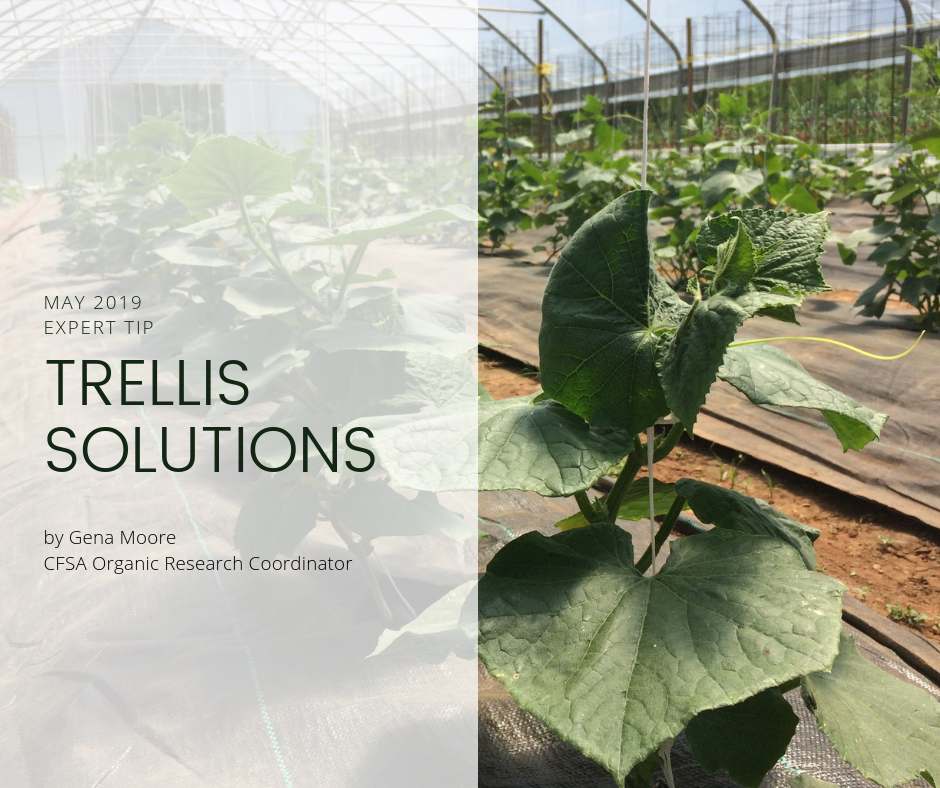
Trellising is standard on most farms for a variety of reasons. Providing plant support can decrease disease, keep plants and fruit clean, increase efficient use of space and even maximize yields. Organic standards encourage farmers to use preventative measures, like trellising, to mitigate disease and pests. Crops commonly trellised are tomatoes, cucumbers, peppers, small melons, pole beans, snap peas, and flowers.
It’s important to choose the right trellising system for your crop and farm. Some factors to consider are:
- Installation costs
- Maintenance requirements
- Constraints on plant growth
- Type of production
Keep reading to find out more about different trellising methods and which ones are right for you.
Florida Weave
This tried-and-true trellising method works great for indeterminate and determinate tomatoes, as well as peppers. The Florida weave can be installed in high tunnels and in the field using stakes, either untreated wood stakes or metal T-posts, and tomato twine. I like using boxed twine with a built-in belt loop which makes running the lines much easier. Typically, this method can accommodate only one row of plants per bed. Both stakes and T-posts can be used for multiple seasons, though wooden stakes will eventually degrade and require replacement. The cost per foot varies on the type of post and plant/post intervals. Average cost: $1-2 per linear foot.
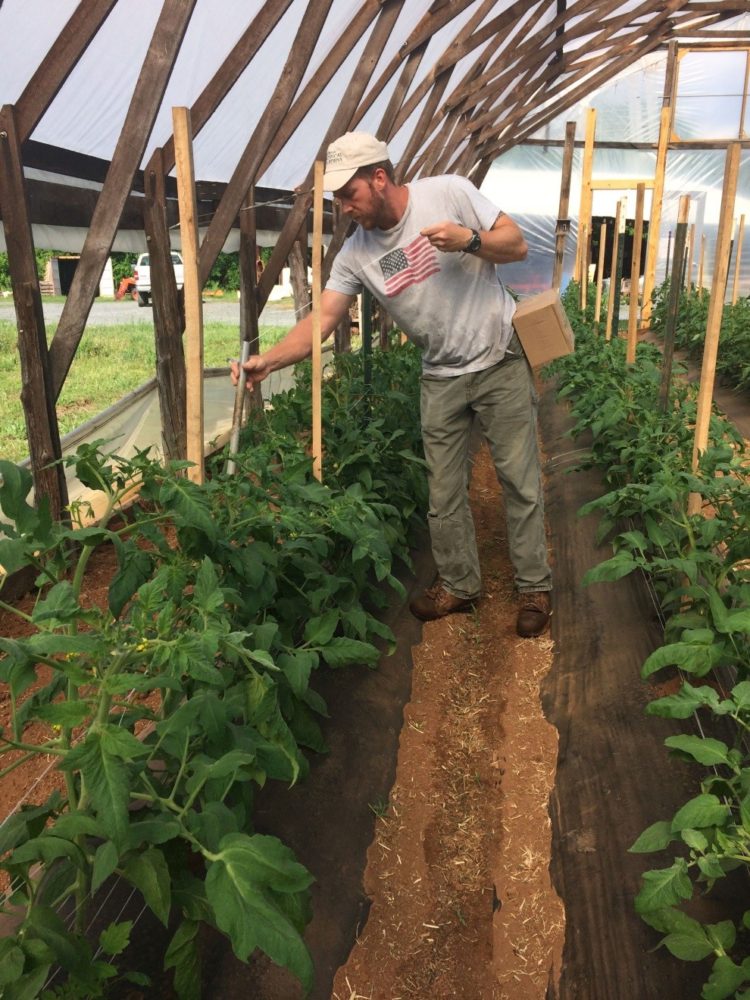 Tomatoes trellised with the Florida weave method at Lomax Research and Education Farm.
Tomatoes trellised with the Florida weave method at Lomax Research and Education Farm.
Line Trellising
Line trellising is most commonly used in high tunnels, although an adapted system can be used in the field. With line trellising, a single or double line of twine is dropped from an overhead cable. Plants are then pruned and suckered to maintain a controlled vertical growth habit which typically consists of one or two main leaders. Clips are used to ‘train’ plants to the line. This system can be used to lower, lean, or drop down plants for an extended growing season. This method can accommodate two rows of plants on staggered spacing within a standard 30-inch bed. Most of the system is reusable though some of the components should be sanitized after each season. Average cost: $1-2 per line.
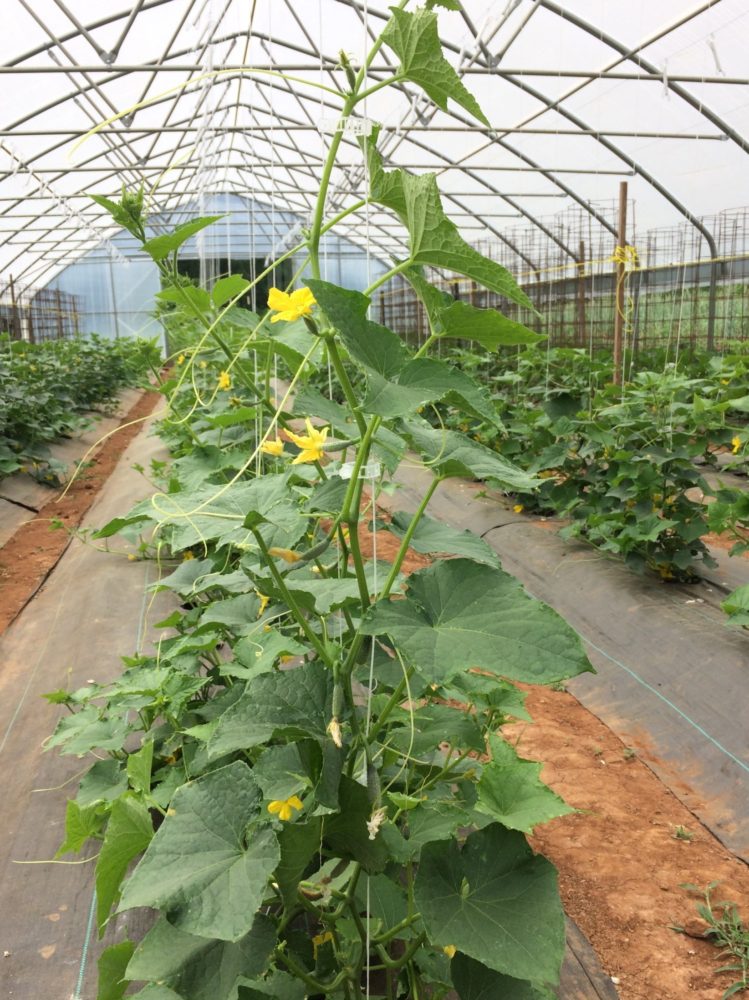
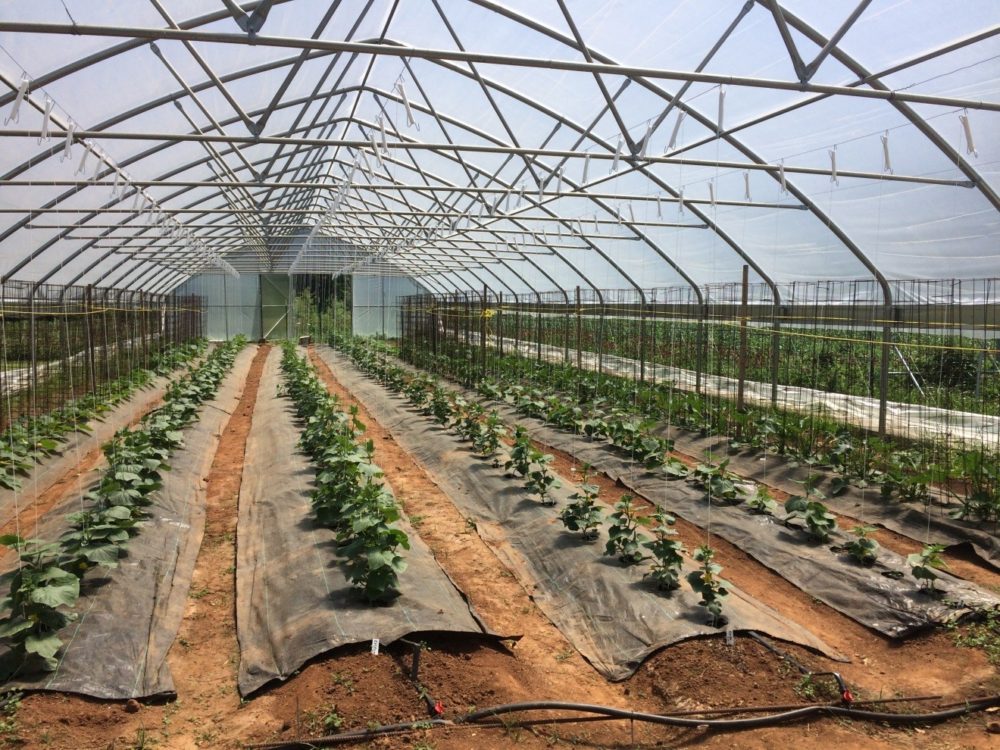
Cucumbers trellised using a line system at Lomax Research and Education Farm.
Tomato Cages
Tomato cages are a favorite for many home gardeners and can be appropriate in some small-scale farming operations. Easy to make and completely reusable, cages are usually made of welded wire fencing and zip ties/wire. It is a good idea to either stake cages in place or tie them together for extra support. Cages are great for determinate or bush type tomatoes but can be used to create vertical growth in a variety of crops. Each cage accommodates one plant. Average cost: $5-7 per cage.
A tomato cage at Lomax Research and Education Farm.
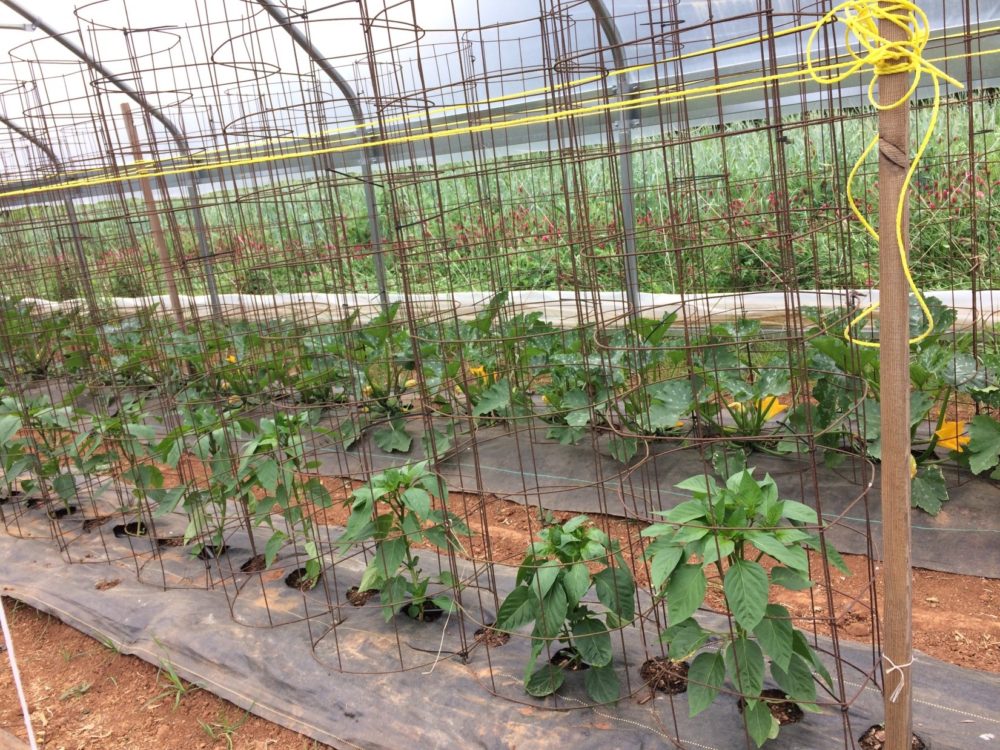 Cages being used inside a high tunnel at Lomax Research and Education Farm to trellis both peppers and squash.
Cages being used inside a high tunnel at Lomax Research and Education Farm to trellis both peppers and squash.
A-Frame
A-frame and hoop trellises are used primarily in field production and are effective for most cucumbers, melons, guards, and other vining crops. Simple to construct, they consist of panels or metal fencing attached to T-post to form an “A” or upside down “U” shape. Crops are then allowed to climb the structure or can be secured with clips/tape. Alternative materials like bamboo, twine, and wood can be used. This system is reusable but the vines will need to be stripped off and disposed of at the end of the season. Typically, this system can support two rows of plants per bed, though the beds may need to be wider than 30 inches. Average cost: $3.50 per square foot.
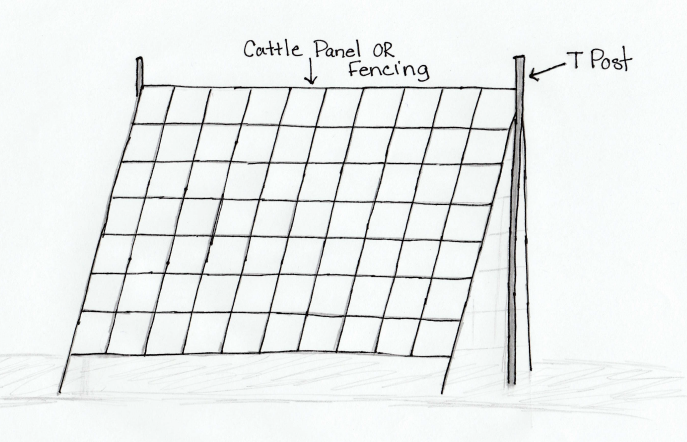
Netting
Netting has been a consistent choice for flower farmers for many years. Stretched and secured on the corners and sides, the netting sits horizontally over flower beds and creates the perfect trellis for many cut-flower varieties. The very same netting can be used vertically as well. If using in a high tunnel, the netting can be suspended from overhead cables, trusses, or purlins and secured to soil with landscape staples. Crops can climb up the netting naturally or attached with clips/tape. Per bed, netting allows for one or two rows of vegetable crops or several rows of flowers. Average cost: $0.63 per square foot.
Netting suspended over a flower crop. Credit: Taylor Bryan
Panel Trellising
Much like the netting, panel trellising is used as a vertical wall for vining plants. Unlike the netting, its rigidity allows for heavier plants like tomatoes to be clipped onto the wire. In most situations, the panels are attached to T-posts or poles in the center of the bed for one or two rows of plants. The panels and post are reusable and create little to no waste, making them a sustainable choice. Average cost: $2-4 per linear foot.
Panels and T Post installed inside a high tunnel for trellising at Inter-Faith Food Shuttle Farm in Raleigh, NC.
To sum it up, there are several trellising choices. When deciding which method to use, make sure to factor in the cost, sustainability, and availability of products along with the needs of the crop. Also, it may take several of these methods on your farm to effectively maximize production for multiple crops. If you’re trying something new this year, remember to keep track of your success with yield counts, labor input, and costs. At the end of the season, look back and measure the success of your new trellising system to help inform decisions next year!
Questions?
If you are interested in learning more about trellising in high tunnels, contact Joe Roland, who provides high tunnel consulting at CFSA.



